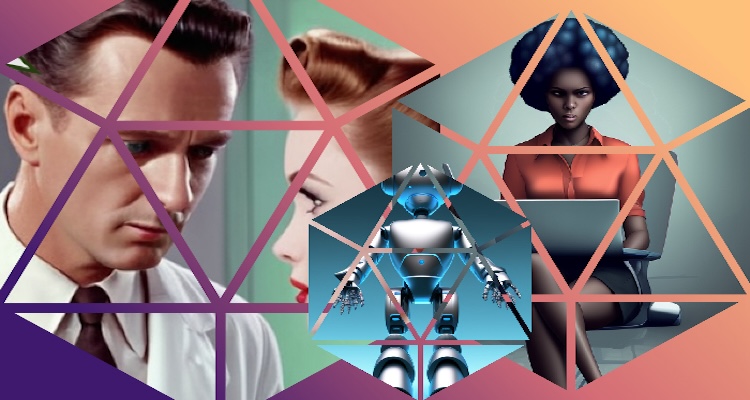Good Idea or Better Than Nothing: Robot Intimacy for People With Autism?
Researchers speculate, but what do those with ASD actually think?

In the development of disability rights movements around the globe, “nothing about us without us” has evolved into “nothing without us,” In other words, people with disabilities, including those on the Autism Spectrum, want a say in research and policies that their own priorities and perspectives.
So when researchers speculate about the uses and advantages of sexbots for people on the autism spectrum, as published in Brain Sciences in 2023, it’s appropriate to wonder if autistic advocates for sexual human rights have something to say about robotic sex partners.
Robots as sexual assistants
The above paper by Pasciuto, Cava, and Falzone, describes the need for a theoretical framework for this consideration, and states “there is still some resistance in recognizing and talking about sexuality in disabled subjects.”
The authors add “disabled people are often seen in a stereotypical way and their sexual needs are ignored or hidden.” And as the article shows, paternalistic overprotection toward people with intellectual disabilities (or differences) is widespread, causing real harm to those who only seek to understand and enjoy their natural desires.
Trained sexual surrogates, such as Cheryl Cohen-Greene, whose work with poet Mark O’Brien was depicted in the 2012 film, The Sessions, are comparatively rare.
So for many people with disabilities—intellectual or otherwise—sex workers can provide the most readily accessible, valuable sexual experiences. However, since sex work is illegal in most places, this is not without risk. As a solution, the article proposes the use of robotic sexual assistants.
So while we note that sex work should be decriminalized and trained sexual surrogates and assistants should be more widely respected and available, let’s still consider the impacts and implications of sexbots.
It’s a brave new world that has such robots in it
Writers and scholars such as David Levy and John Danaher have described three necessary characteristics of a sexbot: humanoid form, having human-like movements and behavior, and advanced artificial intelligence.
Pasciuto et al comment “It is exactly the possession of these three factors that makes it possible to distinguish a sexbot from the most common sex toys and especially from sex dolls.” (Levy also suggests the advantage of pre-programming a sexbot’s level of fidelity, apparently to take the worry out of being close.)
However many researchers and authors laud the potential of sexbots in general and cite the potential advantages for people with disabilities and illnesses in general, so the question remains, are sexbots an intimacy option that a significant majority of neurodivergent people might desire and would be willing and able to embrace?
So far, many articles and books on this topic are apparently riddled with assumptions.
Assume nothing and avoid techno-ableism
In other words, Human Robot Interaction (HRI) research, and sources such as the ones mentioned above, need to take autistic research priorities into account, as articulated by neurodivergent researchers and lay people. Perspectives and guidelines do exist.
For example, in March 2024, researchers at Carnegie Mellon (US), Uppsala University (Sweden) and Radboud University (The Netherlands) published a meta review which concluded:
“…[we] find the bulk of research on Autism robots ranges from cases where there is substantial room for improvement up through cases where there is a high risk that harm has occurred.”
The authors also “advise researchers to shift research priorities and project designs to address Autistic people’s priorities for Autism Research.”
For example, the article references a study done in Scotland that showed that inquiries into “Autistic Joy” ranks 16 out of 25 possible research priorities and that “treatments and interventions” rank 24 out of 25.
Instead of deciding in advance that autistic people are going to enjoy or benefit from sexbots, the article suggests,
“Autism-related robots should be carefully and inexpensively designed to address top Autistic priorities, then be rigorously evaluated against robot-free alternatives e.g. with Randomly Controlled Trials (RCT) or high-quality qualitative studies.”
“Studies need to explicitly follow frameworks… to ensure Autistic people’s individual needs are supported in system designs and during the research process.”
It is also worth wondering if the eagerness to promote sexbots to marginalized people, is based on an unspoken bias about the lack of sexual desirability of such people.
Desire for artificial companionship does not need social justification
Research that explores social and sexbots as useful for people with various disabilities and physical maladies, or who are socially isolated due to age or other factors, does have a place in discussions of sex tech development, especially if that research is informed at the outset by the priorities and considerations of the targeted group. It’s important to avoid assumptions which can be damaging, particularly to people who are already marginalized.
Finally, an individual already interested in sexbots will not need a research study to socially justify his, her, or their desires. Manufacturers know there is a demand and are working to fulfill it. And if sexbot niche markets do develop to address specialized needs of certain groups, those consumers should have a role in shaping the research, as well as the products, based on their priorities.
In short, nothing should be done without them.
Image Sources: A.R. Marsh using Starry.ai, Depositphotos

















